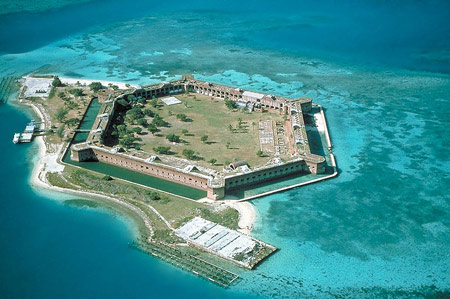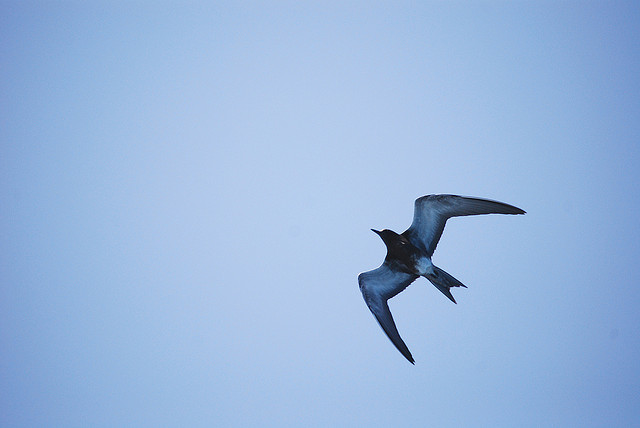Accessible only by boat or seaplane, closer to Cuba than to the American mainland and housing the largest masonry fort in the United States, Dry Tortugas is not exactly the typical American national park. In fact, it is one of the most remote, smallest and least-visited parks in the system. Nevertheless, it is remarkable, and today marks its 20th anniversary.

While its history as a national park is a relatively short one, its historical and cultural significance is vast. Nearly 70 miles west of Key West, Florida, the Dry Tortugas are comprised of seven keys. Discovered by Ponce de Leon in 1513, the islands are strategically located on the edge of the main shipping channel between the Gulf of Mexico, the western Caribbean and the Atlantic Ocean. As early explorers and merchants traveled through the Tortugas to and from the Gulf Coast, the islands came to be both an important passageway and a navigational marker.
In enemy hands, the Tortugas would have threatened the ship traffic and eastern seaboard of the United States. So in 1846, the United States began construction on Fort Jefferson in an effort to protect the lucrative shipping channel. After nearly 30 years of construction, the fort was left unfinished and unarmed — and so it remains. It did, however, fulfill its intended purpose. Fort Jefferson came to be regarded as a brilliant and undeniable symbol of the United States’ desire to be left alone and helped to protect the peace and prosperity of our young nation. Even in its unfinished state, the fort was one of the largest masonry coastal forts of the 19th century — large enough to have served as a military prison during the Civil War.

Fort Jefferson was proclaimed a national monument in 1935, but further attention was eventually drawn to the Dry Tortugas’ subtropical marine system and wildlife. Their thriving coral and sea grass communities are among the most vibrant in the Florida Keys. Large sea turtles return to their beaches every summer to bury clutches of eggs. And the sooty tern’s only regular nesting site in the United States is on Bush Key, adjacent to Fort Jefferson. In light of its tremendous natural resources and rich cultural heritage, the area was declared Dry Tortugas National Park on October 26, 1992.
While it is off the beaten path, there is certainly no shortage of things to do at Dry Tortugas. Visitors can explore historic Fort Jefferson, snorkel the incredible marine resources, enjoy world-class birdwatching and engage in countless other activities. Happy Birthday to this hidden gem!